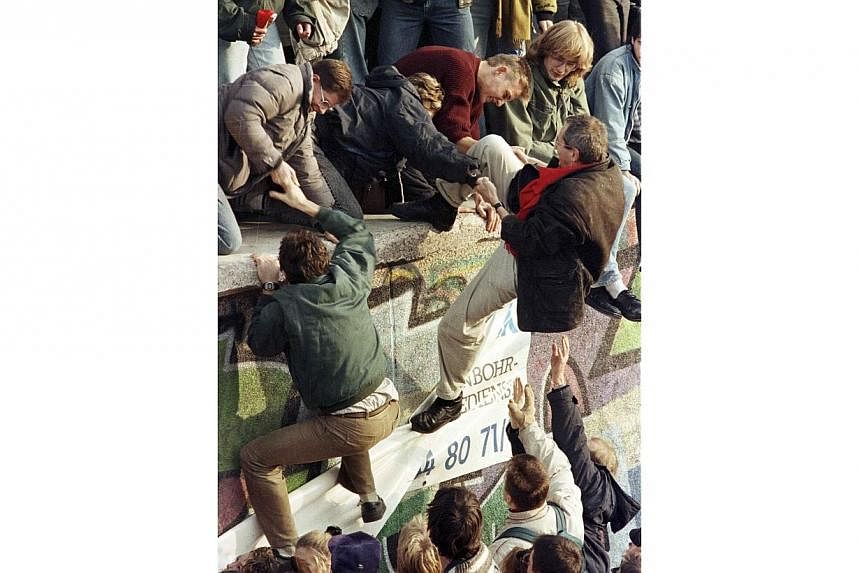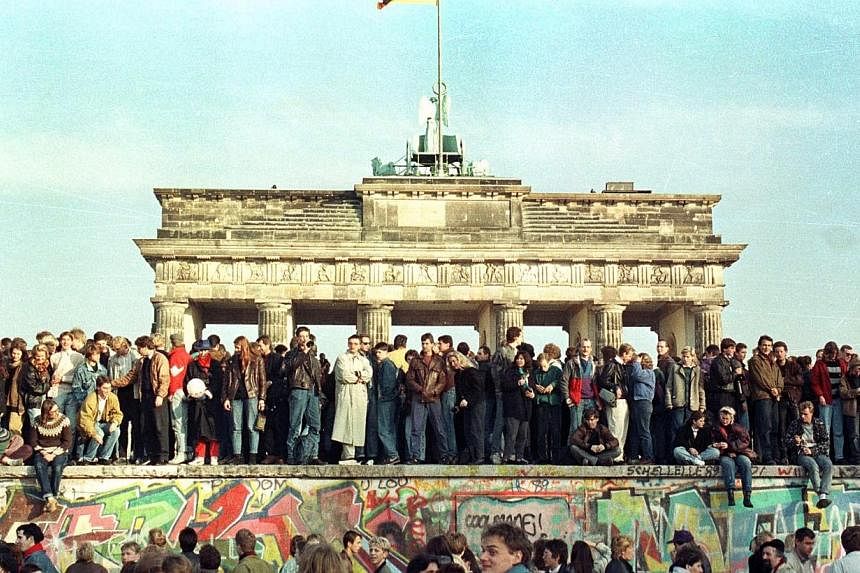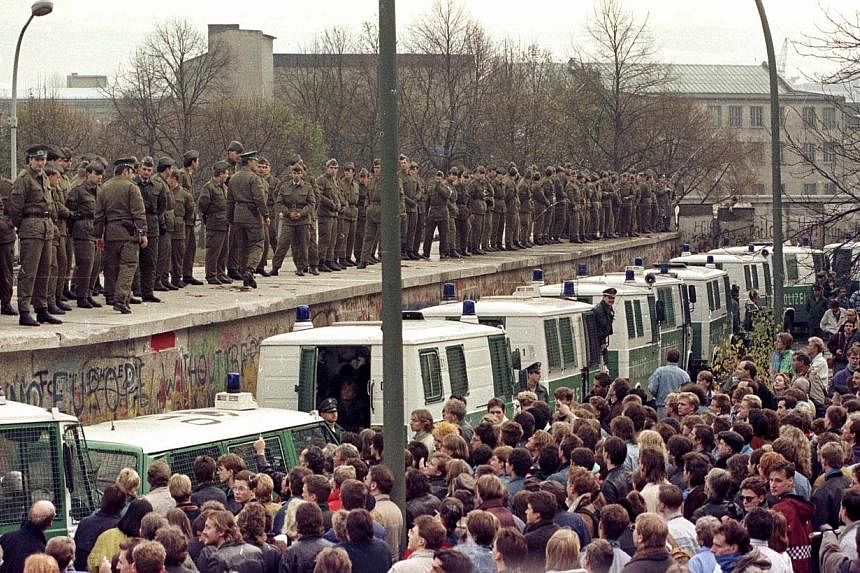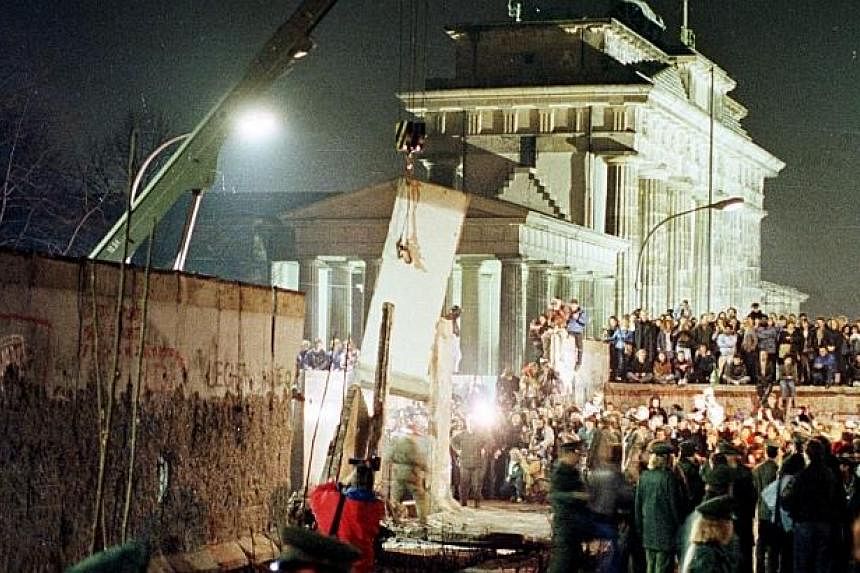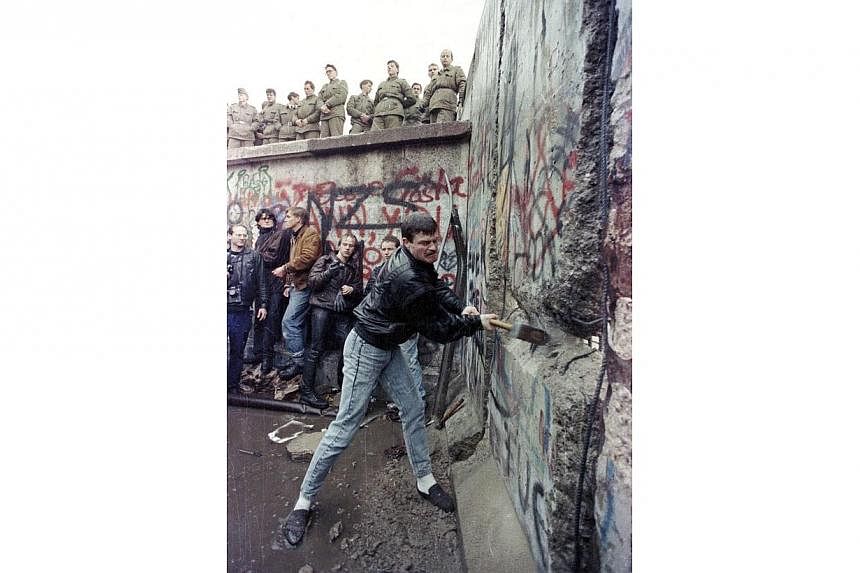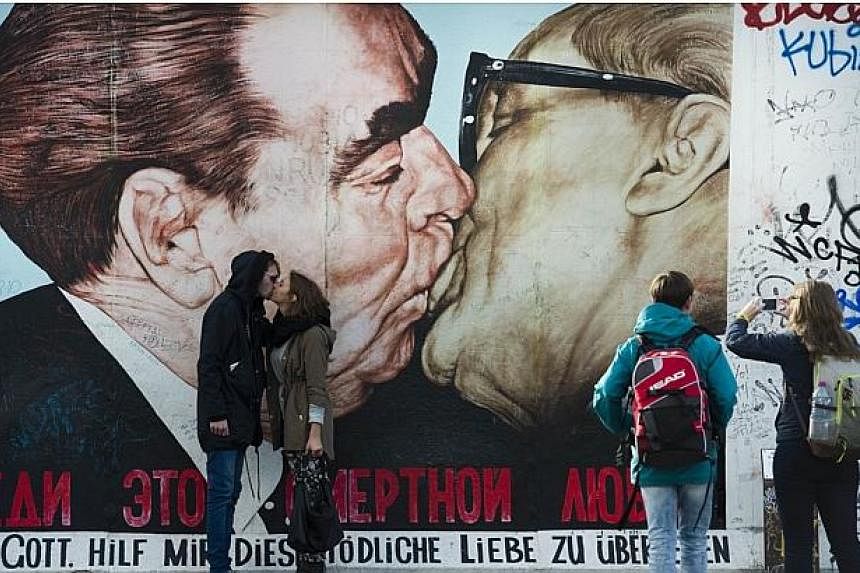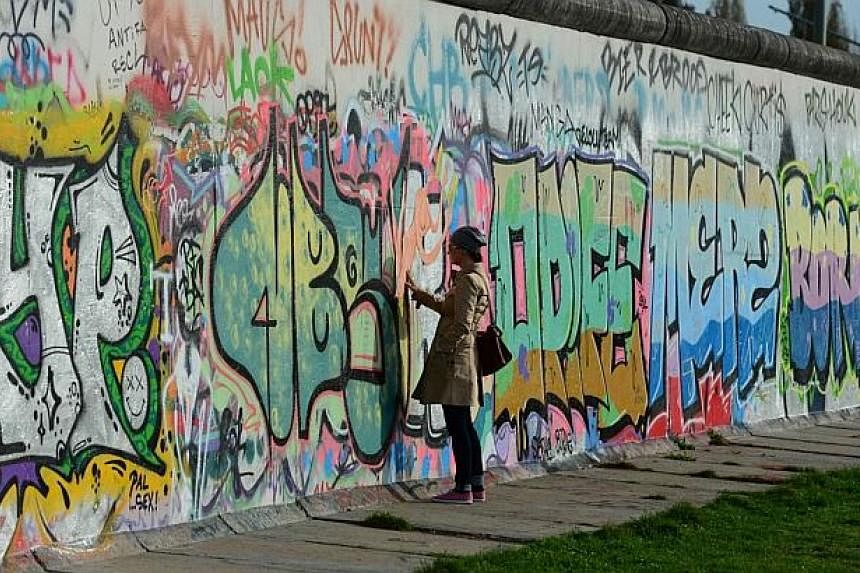They dug under the Berlin Wall, flew over it in hot air balloons, swam across rivers and hid themselves in car boots to escape the former German Democratic Republic (GDR), or East Germany. Hundreds, perhaps thousands died in the attempt; there is no consensus on the numbers.
Then, on Nov 9, 1989, it fell because of a blunder. Politburo member Guenter Schabowski, intending to announce a relaxation of travel restrictions to West Germany, gave the impression that restrictions would be removed "immediately".
As tens of thousands turned up at the Wall demanding to be let through, border guards were completely in the dark, and had received no instructions. Facing a belligerent crowd, the guards finally made the decision to open the border.
The Wall had fallen, and wild celebrations followed.
Now, 25 years after the fall of the Wall, Berlin will throw a street party and release 8,000 illuminated balloons on Nov 9 to mark the world-changing revolution.
We look at the history and impact of the Wall and its fall.
Berlin Wall 1961-1989
Aug, 1961: As a growing number of East Germans stream into West Berlin amid worsening conditions and fears the border may one day be closed, Communist East German leader Walter Ulbricht issued a decree to seal off the border. After midnight, East German troops begin erecting barbed wire and fences that were later fortified to become concrete walls guarded with watchtowers.
Aug 19, 1961: The Wall claims first life as man falls to his death trying to climb down from his top-floor apartment in East Berlin's Bernauerstrasse to pavement below in West Berlin.
Aug 24, 1961: Date of what is generally accepted as first killing by border guards after the Wall went up. Guenter Litfin, 24, was shot dead as he swam across the river Spree.
June 12, 1987: Then United States President, Mr Ronald Reagan, visited the Wall and issued this challenge to Soviet leader Mikhail Gorbachev: "If you really want glasnost, if you really want openness, tear down that Wall."
Jan 1989: Popular protests against East German government become bolder and more widespread.
Nov 4, 1989: Half a million demonstrate for democracy in East Berlin.
Nov 9, 1989: Announcement that all East Germans can go to the West from following day if they apply for an exit visa. Mix-up means that, within minutes, East Berliners besiege border guard posts. By midnight hundreds of thousands breach Wall and pour into the West.
Oct 3, 1990: East and West Germany are formally reunited.
East German town thrives 25 years after fall of Berlin Wall

Once hemmed in by the Iron Curtain, the eastern German town of Sonneberg has undergone something of an economic miracle, proving that the long, painful transition from communism can bear fruit at last.
Within months of the Berlin Wall being pulled down in 1989, what had been the centre of East Germany's toy industry was in crisis. Unable to compete on a global market, factories were being shut down while buildings were falling to pieces and unemployment queues were growing rapidly.
But just as western Germany achieved an economic miracle in the decades after World War II, Sonneberg offers hope that the east can complete its recovery from the collapse of communism and narrow the gap with the west.
Read more here
Escape across Berlin Wall, then back for heroic rescues

A daring escape across the Berlin Wall, then audacious dashes back to the East to spirit another 30 people to freedom - Hartmut Richter's true story is the stuff of a Cold War thriller.
Richter, now 66, loved to swim in the sparkling lakes of Potsdam as a teenager living behind the Iron Curtain, quietly dreaming of liberty and adventure in the West.
His reckless plan: swimming across the Teltow Canal separating the East German region of Brandenburg from West Berlin.
Richter slipped into the chilly canal and it would take him four hours filled with heart-stopping moments of dread until he reached land again.
Read more here
25 years on, Germany's east-west divide still palpable

A quarter of a century after then chancellor Helmut Kohl promised "flourishing landscapes" in the five states that made up the former German Democratic Republic (GDR), the gap between the east and west Germany continues.
According to the latest official data, unemployment in the five former eastern states stood at 9.7 per cent in September, compared with 6.0 per cent in the west.
Various causes had led to the disparity and the weaknesses of the former GDR's economy.
Read more here
Berlin veteran dug a secret tunnel to save refugees but landed in toilet

Sometimes a mission to do good can land you in a mess.
In 1964, the now silver-haired Berliner Ralph Kabisch and a group of students spent three months digging a tunnel under the Berlin Wall to rescue refugees from the eastern part of the country, in what was perhaps the most militarised city in the world in those days.
They managed to save 57 people through the 145m-long tunnel from Bernauer Strasse in West Berlin to Strelitzer Strasse in East Berlin over two days in October 1964, before they were betrayed. Read more here
Sources: Reuters, BBC, Washington Post, Berlin.de, Straits Times Archive, The Nation/Asia News Network

